In mid-July, around 50 participants gathered in Boğatepe village near Kars in northeast Türkiye for a festival of pastoralism. It was a diverse group with researchers working on pastoralism from ten countries, coming together with artists, designers, architects, chefs, restaurant owners pastoralists and other villagers from the two project sites. Over three days, the festival was a mix of research talks in both village halls and out in the pastures; walks through the pastures to observe and learn about the vegetation; music and dance from different pastoral areas and art/craft workshops exploring the challenges of pastoralism in Türkiye. Simultaneous translation provided through La Via Campesina Europe massively increased our ability to interact. The festival was both much fun and hugely enriching.
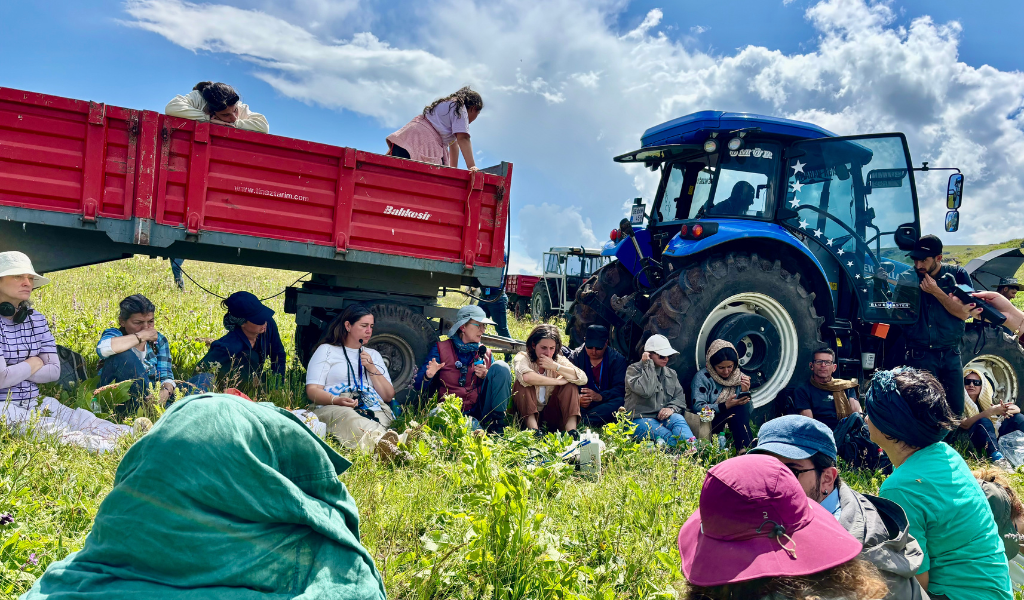
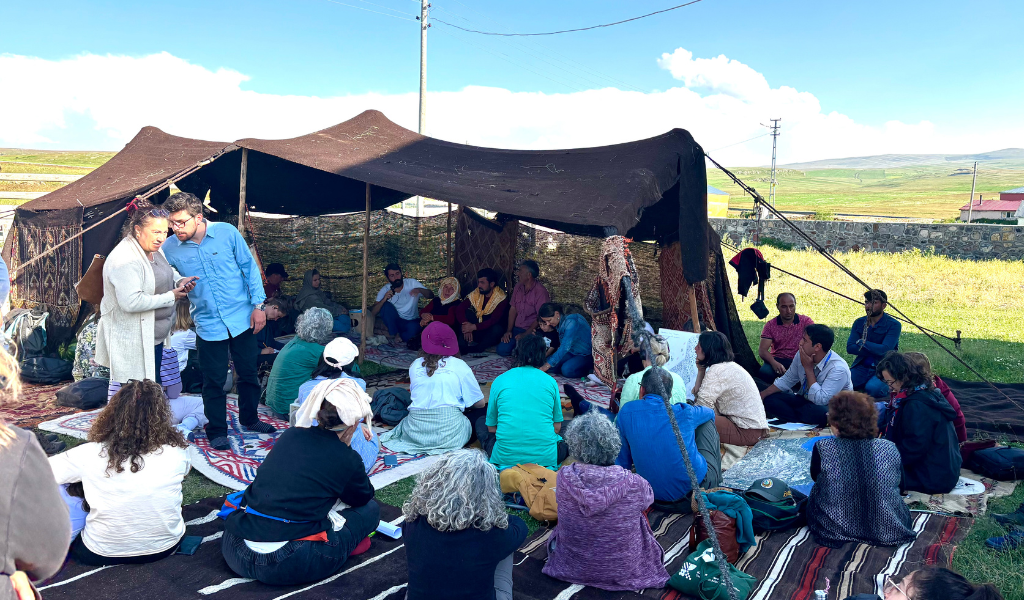
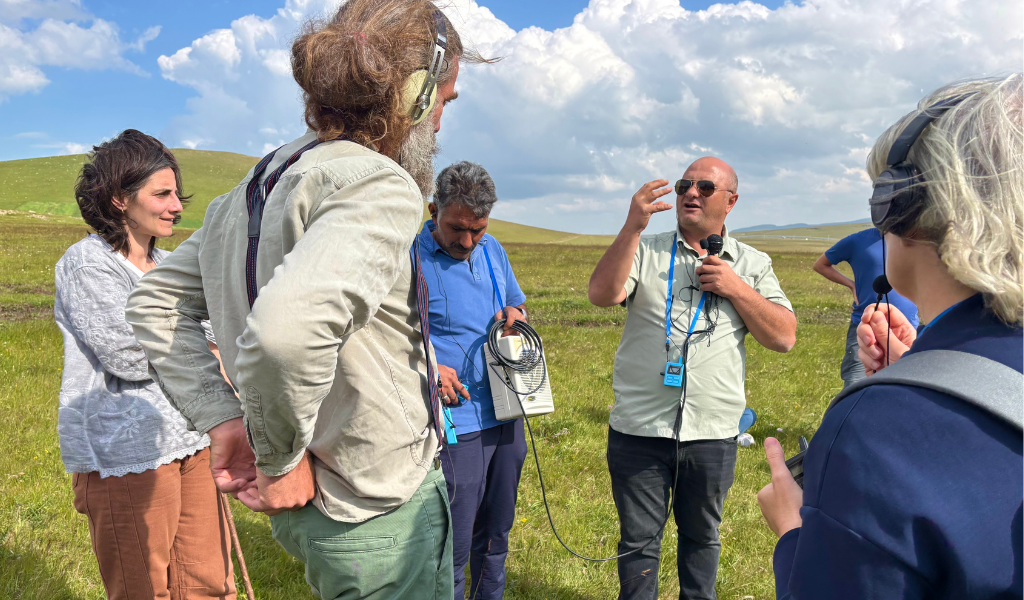
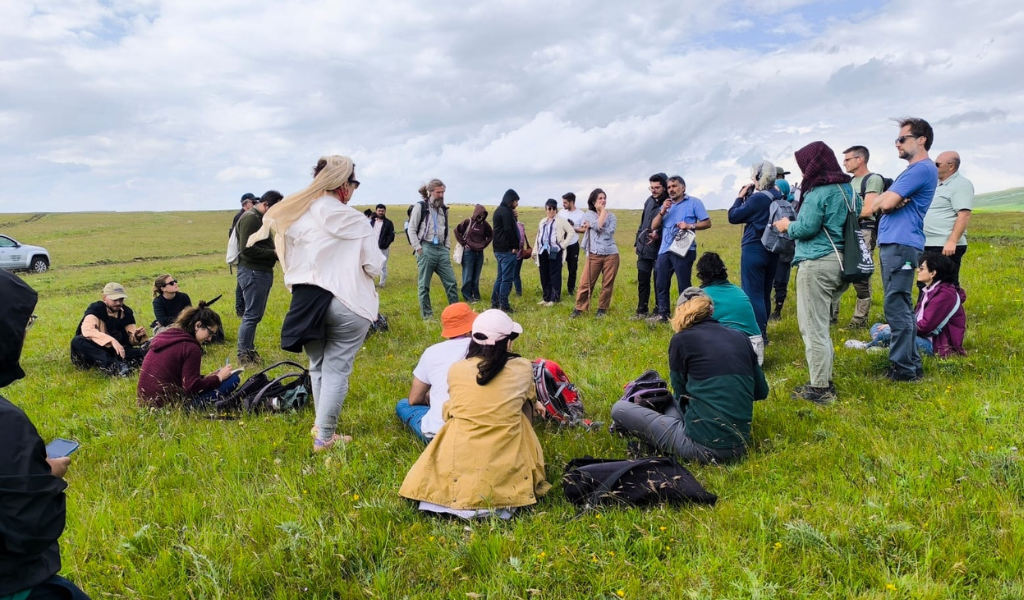
The festival was led by a research team working on a British Academy sponsored project – Pastoralism and climate action: participatory planning for the governance of extensive grazing in Türkiye – and based at Bilkent University, Izmir University of Economics and IDS, alongside independent researchers from Türkiye. The research team has been working with families engaged in livestock-keeping in the Kars-Ardahan-Iğdır region and centred on Boğatepe village, where cattle farming and cheese-making is central to the local economy, as well as families of the Sarıkeçili community practising nomadic goat herding and sales for meat during a 400km transhumance across the Taurus mountains between Mersin and Konya.
The research findings were presented in an exhibition curated especially for the festival. This combined maps of the pastoral study areas coming from different perspectives – from state planning agencies, from the work of the research team based on interviews and participatory maps developed by pastoralists. The maps were combined with ethnobotanical displays of key plants that are important for pastoral systems – for fodder, construction, medicine and so on.


The two pastoral communities involved in the project also displayed the craft work that they had been working on over the previous months, including felt images, embroidery, leather work and so on. The displays highlighted particular types of vegetation, pastoral landscapes and the multispecies worlds of pastoralists, linking people with animals and plants.

The focus of the art-craft workshops with pastoralists that preceded the festival was not so much on the final products, but on the process of discussion that such work resulted in. Mostly involving women from the two communities, the challenges of climate change, access to grazing, the changing patterns of plant species and the importance of pastoral cultures were highlighted. Exchanges between the two pastoralist groups present at the workshop emphasised the commonalities and shared experiences.
During the workshop we heard from participants from Tibet in China, India, Ethiopia, Georgia, Austria, Germany, Switzerland, Spain and beyond, and it was clear that the challenges of access to grazing, climate change and adaptation, the imposition of state policies that don’t take account of pastoral mobility, the restrictions on movement arising from infrastructure and external investments, as well as the inadequate policy frameworks to support productive pastoralism, were common across the world. Some of the lessons from the PASTRES programme were presented by three former IDS PhD students.
Our final workshops returned to the different maps prepared by the project. Maps as visions of a landscape and statements about the world are inevitably political, but we asked, how can different visions be reconciled in ways that pastoralist voices are heard? Can mapping exercises of the sort that the project has been undertaking in different places – and most importantly the deliberations around them – open up productive conversations around the challenges faced?
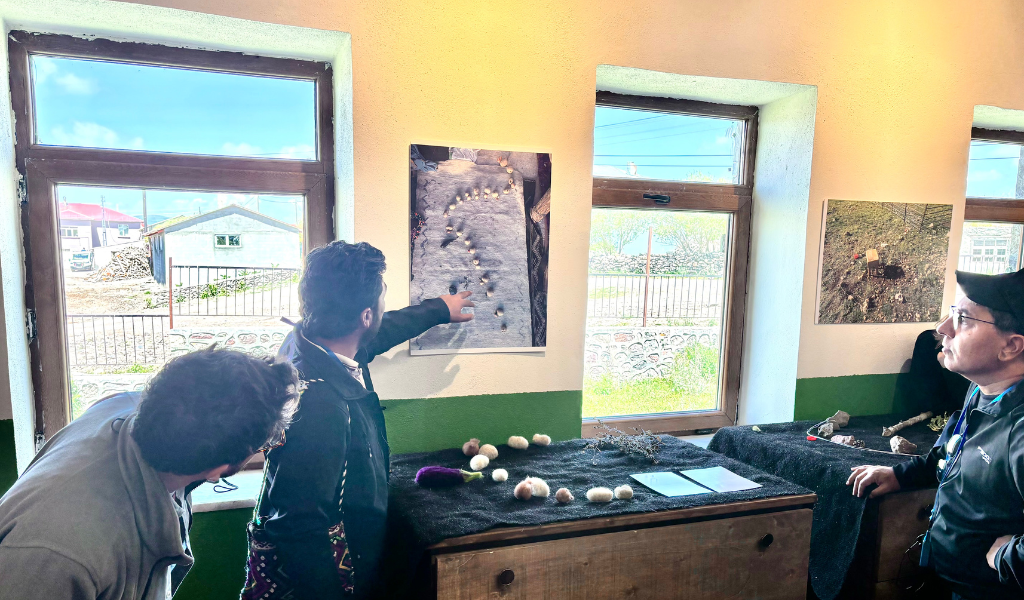
In concluding, we highlighted four next steps to continue the work that the project has started.
First, making use of the maps – state, researcher and pastoralist – from the Taurus mountains we have identified a number of key constraints facing the nomadic Sarıkeçili community. These include the lack of water along certain parts of the transhumant pathway; the lack of grazing space in areas that have been seriously encroached by orchards and intensive agriculture; the dangers of passage through a town where transhumant paths converge and finally access to forests that have been closed due to fire risks. In the final months of the project, we aim to convene some discussions between state agriculture and forestry officials and pastoralists to define some low-cost actions that can improve the flexibility of movements of livestock and people.
Second, some strategic areas of action-oriented research have been identified. An 18-month project is inadequate to address these, but involving pastoralists in framing some key research questions to be pursued by postgrad students in the future could generate important evidence for policy advocacy by pastoralists. One example was the question of fire management in forests and the role of managed grazing in fire prevention. Rather than excluding pastoralists and their animals from such forests, they could be encouraged to graze in certain places and at certain times to reduce fire load, opening up grazing access.
Third, the sharing of experiences across pastoralist communities was identified as a major benefit of the festival, but how could this be institutionalised more effectively in order to build a wider platform for pastoralism in Türkiye? Our discussions touched on the importance of pastoralist/shepherd schools in different parts of Europe – we heard from Austria, Spain and Switzerland, for example. Beyond some elements of ‘teaching’, such schools can offer a space for pastoralists to exchange and for the recruitment of new, especially young and female, pastoralists. Across countries represented at the festival, the challenge of out-migration and generational renewal was highlighted repeatedly, but pastoralist/shepherd schools can provide a new impetus to revitalise pastoralism.
Fourth, and finally, drawing inspiration from the INLAND project in Spain, the opportunities of demonstrating the benefits of pastoralism to a wider public was emphasised. Many urban elites have no idea about pastoralism, the importance of mobility and the role that mobile pastoral practices can play in biodiversity protection, revitalisation of landscapes and climate mitigation. Bringing pastoralism to the cities is an important challenge, and various options for displaying the research and craft exhibitions produced for the festival were discussed. Linking for instance to the Sarıkeçili community-led restaurant, Geççi, based in Istanbul, would allow restaurant diners to connect pastoral food cultures to crafts and research findings in new ways.
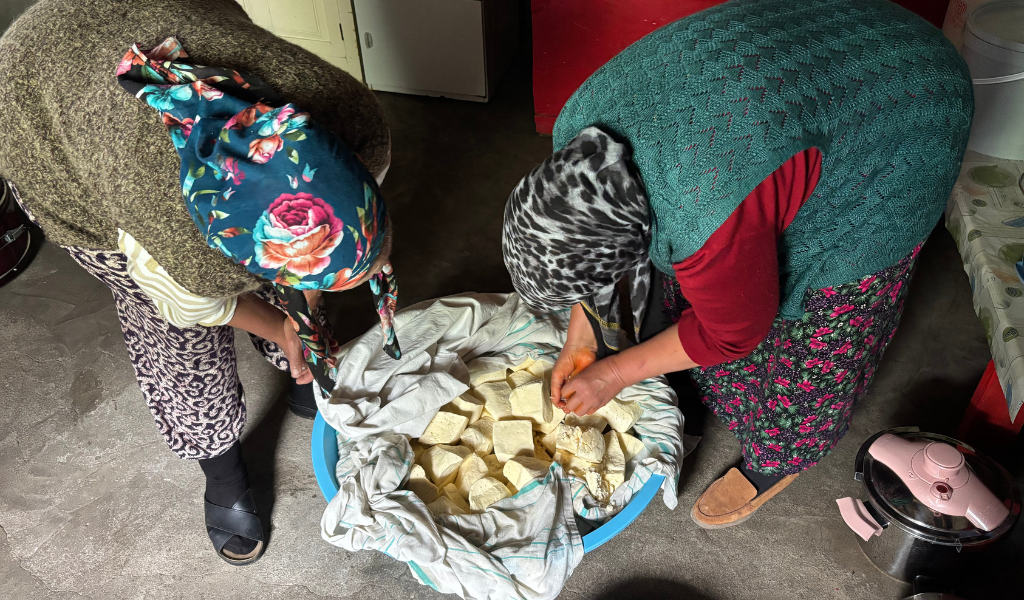
Next year is the United Nations International Year of Rangelands and Pastoralism and the work of the project will feed directly into the policy debates that the year will provoke. Representing the newfound linkage between pastoral communities who did not know each other before, the goatskin bag made by the Sarıkeçili community was filled with cheese from Boğatepe village during the festival. Later in 2025, as the project closes and the international year is launched, the bag will be opened, and the cheese shared to celebrate our collective work and confirm the next steps.
All pictures were taken by Ian Scoones
